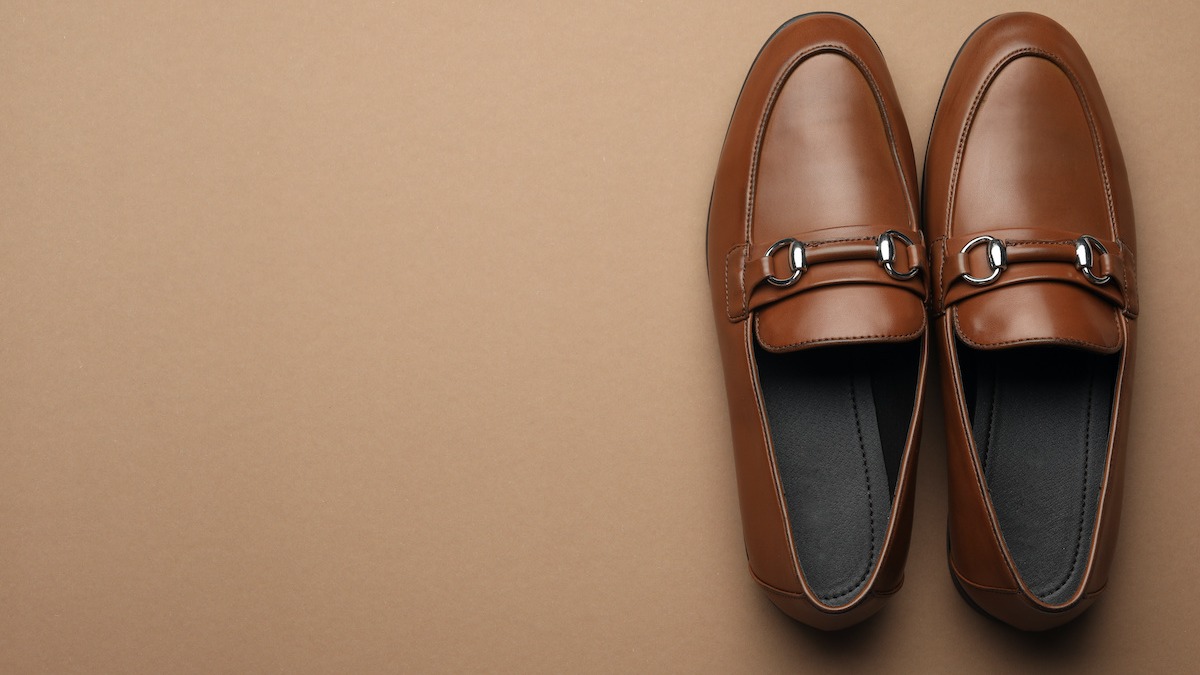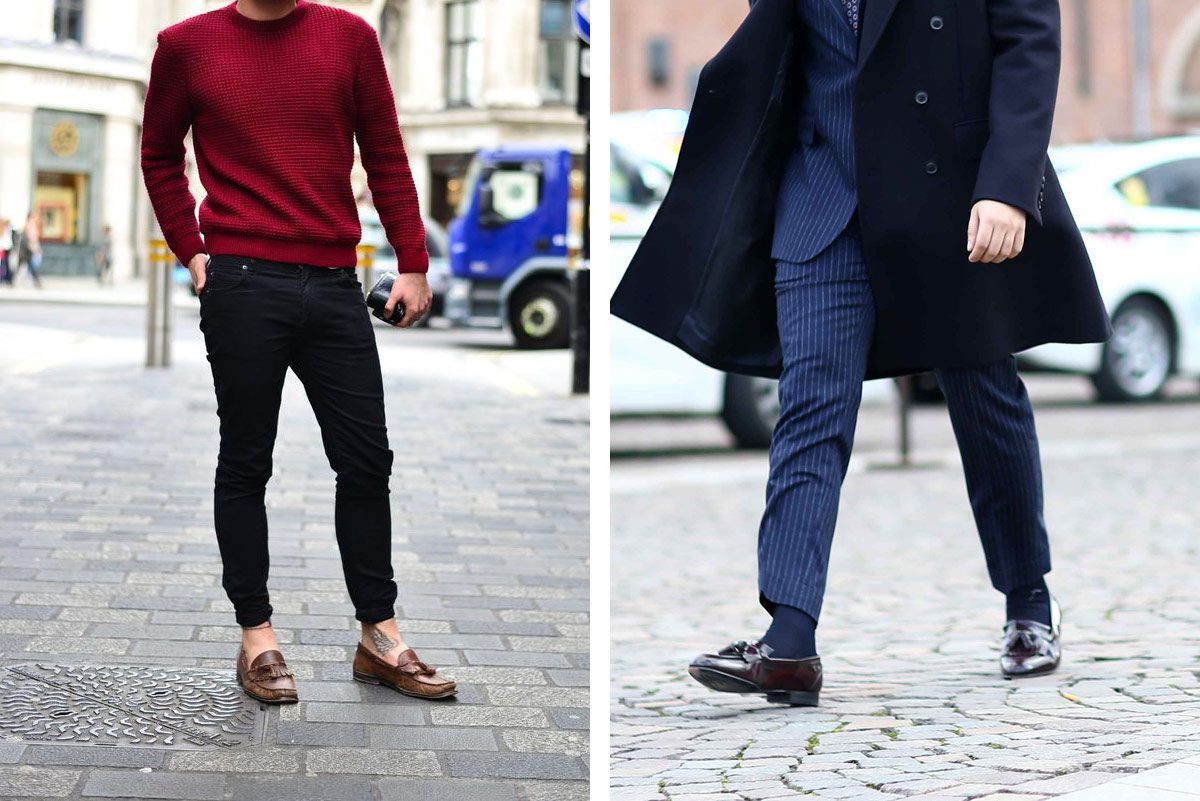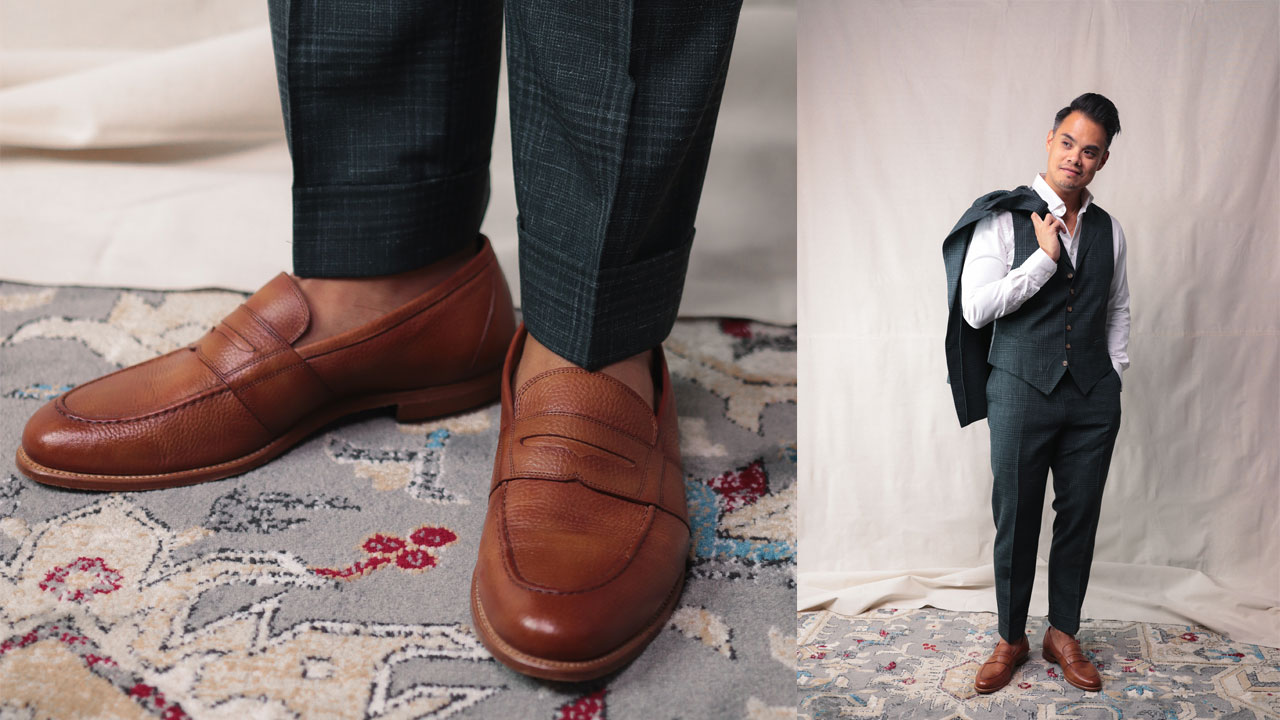Are loafers business formal? The answer isn’t a simple yes or no. This seemingly straightforward question delves into the nuanced world of professional dress codes, exploring the subtle distinctions between various loafer styles, materials, and the overall context of the workplace. We’ll examine different loafer types, from classic penny loafers to more embellished styles, and analyze how factors like color, material, and even the prevailing office culture influence their perceived formality. Ultimately, we’ll equip you with the knowledge to confidently navigate the complexities of professional attire and determine whether loafers are an appropriate choice for your specific business environment.
This guide will dissect the definition of “business formal,” providing examples of acceptable footwear and outlining the historical evolution of this dress code. We’ll then delve into the characteristics of various loafers, presenting a detailed comparison with other formal footwear options like oxfords and derbies. Finally, we’ll offer visual examples showcasing how different outfits and accessories can impact the overall impression of formality when wearing loafers.
Defining “Business Formal” Attire

Business formal attire represents the most conservative and polished level of professional dress. It signifies respect for the occasion, conveys professionalism, and often indicates a high-stakes environment such as a board meeting, a high-level job interview, or a formal business dinner. This dress code demands a meticulous approach to every aspect of one’s appearance, from the clothing itself to the accessories and, crucially, the footwear.
The defining characteristics of business formal attire typically involve a tailored suit in dark colors (navy, black, or charcoal gray) for men and women. For men, this usually includes a crisp, white or light-colored shirt, a conservative tie, and polished dress shoes. Women might opt for a pantsuit or a skirt suit, often paired with a blouse and similarly polished shoes. The overall impression should be one of sophistication, understated elegance, and impeccable grooming. Accessories should be minimal and refined, avoiding anything flashy or distracting.
Acceptable Business Formal Footwear
The choice of footwear is an integral part of achieving a business formal look. Inappropriate footwear can undermine the overall impression of professionalism, no matter how well-tailored the rest of the outfit is. For men, classic black or dark brown leather oxfords or plain-toe derbies are the standard. These should be highly polished and in excellent condition, free from scuffs or damage. Women have slightly more leeway, but similarly polished closed-toe pumps or heeled shoes in neutral colors like black, navy, or brown are the safest and most appropriate choices. Avoid any footwear with embellishments, open toes, or excessively high heels.
Historical Context and Evolution of Business Formal Attire
Business formal attire’s origins can be traced back to the late 19th and early 20th centuries, coinciding with the rise of large corporations and the increasing importance of projecting an image of authority and respectability. The three-piece suit for men, for example, became a symbol of power and success. Over time, the standards have evolved somewhat. While the core principles of conservatism and sophistication remain, the styles have undergone subtle shifts, reflecting changing societal norms and fashion trends. For instance, the once-ubiquitous pinstripe suit is less common today, replaced by more streamlined, contemporary styles. The evolution reflects a move toward a more modernized, yet still highly professional, appearance. However, the fundamental requirement for polished, high-quality garments and impeccable grooming remains a cornerstone of business formal dress.
Examining Loafer Styles: Are Loafers Business Formal
Loafers, a staple in men’s formal footwear, offer a surprising diversity in style and construction. Understanding these variations is crucial for selecting the appropriate pair for a business formal setting, where subtle details can significantly impact the overall impression of professionalism. This section will explore the key differences in loafer types, materials, and their respective levels of formality.
Loafer Types and Their Distinguishing Features
Several distinct loafer styles exist, each with its own unique aesthetic and implied level of formality. These variations stem from subtle design elements, such as the addition of embellishments or alterations in the construction. The most common types are discussed below.
| Loafer Type | Material | Color Examples | Formality Level |
|---|---|---|---|
| Penny Loafer | Leather (calfskin, patent leather), Suede | Black, Burgundy, Brown, Dark Navy | Business Formal (depending on material and color) |
| Tassel Loafer | Leather (calfskin, suede), Leather with patent leather accents | Black, Brown, Dark Green | Business Formal (generally less formal than penny loafers) |
| Horsebit Loafer | Leather (calfskin, suede), Patent Leather | Black, Brown, Burgundy | Business Formal (often considered slightly less formal than penny loafers, depending on material) |
| Kiltie Loafer | Leather (calfskin, suede) | Burgundy, Brown, Black | Business Formal (can be less formal depending on the kiltie design and material) |
| Belgian Loafer | Leather (various types), Suede | Brown, Tan, Dark Grey | Business Casual to Business Formal (depending on material and color; less formal than other types) |
Material Selection and Its Impact on Formality
The material used to construct loafers significantly influences their perceived formality. Certain materials inherently lend themselves to more formal occasions, while others convey a more relaxed or casual vibe. The choice of material, therefore, should be carefully considered when assembling a business formal outfit.
| Material | Impact on Formality | Example |
|---|---|---|
| Leather (Calfskin) | High Formality: A classic and refined choice, often associated with high-quality and sophisticated footwear. | A pair of black calfskin penny loafers would be highly appropriate for a formal business meeting. |
| Patent Leather | High Formality (with caveats): The high shine adds a level of polish, but can appear less versatile than calfskin. | Black patent leather loafers are suitable for formal events but may appear too shiny for everyday business. |
| Suede | Medium Formality: Suede offers a softer texture and a slightly less formal appearance than leather. | Brown suede loafers might be suitable for a less formal business setting or a business social event. |
Contextual Appropriateness of Loafers

The appropriateness of loafers in a business formal setting hinges on several factors, primarily the specific style of loafer, the overall outfit, and the context of the business environment. While generally considered less formal than oxfords, certain loafer styles can be acceptable in some business formal situations, provided the rest of the attire adheres to strict professional standards. Understanding these nuances is crucial for navigating the complexities of business dress codes.
Loafers, particularly those crafted from high-quality leather with minimal embellishment, can be suitable for less rigidly formal business environments. Think of industries like creative agencies, tech startups, or certain professional service firms where the dress code might be more relaxed, yet still professional. However, it’s essential to remember that even in these settings, the overall presentation must maintain a level of sophistication.
Loafers Compared to Other Formal Footwear
Oxfords, with their closed lacing system and sleek profile, consistently rank as the most formal footwear option for men. Derbies, featuring open lacing, represent a slightly less formal alternative, offering more flexibility and comfort. Loafers, lacking laces entirely, generally fall below both oxfords and derbies on the formality scale. However, the specific design of the loafer can influence its perceived formality. For example, a plain, leather penny loafer might be acceptable in a less formal business setting, while a tassel loafer or one with excessive ornamentation would be inappropriate. The key differentiator lies in the level of detail and embellishment. Simple, unadorned loafers are closer to the formality of derbies, while ornate loafers stray further into casual territory.
Impact of the Overall Outfit on Loafer Acceptability
The success of incorporating loafers into a business formal ensemble rests heavily on the complementary elements of the outfit. A flawlessly tailored suit, crisp shirt, and perfectly knotted tie can elevate even a relatively simple loafer to a level of professional acceptability in some contexts. Conversely, a poorly fitting suit or an overly casual shirt paired with loafers will immediately undermine the intended level of formality. The material of the loafers is also critical. High-quality leather loafers will project a more professional image than those made from suede or other less formal materials. Color is also a factor; classic black or brown loafers tend to be more versatile and appropriate than brighter or more unusual colors. Essentially, the loafer becomes an element within a larger stylistic equation; its appropriateness depends on the harmony and balance of all the components.
Factors Influencing the “Business Formal” Judgment of Loafers

The perception of loafers as appropriate business formal footwear hinges on several interconnected factors. These factors extend beyond simply the shoe itself, encompassing the wearer’s context and the prevailing workplace culture. A seemingly minor detail, like the color of the leather, can significantly impact the overall impression of professionalism.
The interplay of color, material, embellishments, and the overall condition of the loafers significantly influences whether they are deemed acceptable within a business formal setting. Workplace culture, including industry norms and individual company dress codes, further refines this judgment. This complex interplay necessitates a nuanced understanding to ensure appropriate attire.
Color and Material Impact on Loafer Formality
The color of the loafer significantly impacts its perceived formality. Deep, rich colors such as black, dark brown, or burgundy generally convey a greater sense of professionalism than lighter shades like tan or beige. Similarly, the material plays a crucial role. High-quality leather, especially full-grain leather, projects an image of sophistication and expense, contributing to a more formal appearance. Conversely, suede or less refined materials may be considered less appropriate for strictly business formal settings. Patent leather loafers, while potentially stylish, can sometimes appear too flashy for the most conservative environments.
Embellishments and Condition, Are loafers business formal
Embellishments on loafers can either enhance or detract from their formal appeal. Minimalist designs, lacking excessive detailing or ornamentation, generally fare better in formal contexts. Ornate buckles, excessive stitching, or bold patterns can appear too casual or even ostentatious for a business formal environment. The condition of the loafers is equally critical. Scratches, scuffs, or worn-down heels detract from a polished professional image. Well-maintained, polished loafers communicate attention to detail and contribute to a more refined appearance.
Workplace Culture and Loafer Appropriateness
The appropriateness of loafers in a business formal setting is heavily influenced by the specific workplace culture. A law firm in a major metropolitan area may have a more relaxed interpretation of business formal attire than a conservative financial institution. Industries with a more creative or less traditional culture might exhibit greater tolerance for loafers in formal settings compared to those with strictly enforced dress codes. Company-specific dress codes provide the most definitive guidance; however, even within those guidelines, individual interpretation and managerial discretion can play a role.
Hypothetical Scenario: Loafers in Different Contexts
Consider two hypothetical scenarios: A junior associate at a prestigious law firm in New York City wearing well-polished, black leather loafers with a minimalist design to a client meeting. In this context, the loafers are likely acceptable, especially if the overall outfit is impeccably tailored. Now, consider the same associate wearing the same loafers to a casual Friday gathering at the same firm. The loafers would likely be deemed entirely appropriate. However, imagine that same associate wearing worn brown suede loafers with visible scuffs to a high-stakes merger negotiation. In this instance, the loafers might be considered inappropriate, potentially projecting an image of insufficient attention to detail or a lack of respect for the formality of the occasion. The key lies in understanding the subtle nuances of context and aligning footwear choices accordingly.
Visual Representations
Visual representations are crucial for understanding the nuances of business formal attire, particularly when considering the appropriateness of loafers. By examining different outfit combinations and analyzing the visual impact of various loafer styles, materials, and colors, we can clarify the boundaries of acceptable formality. This section will provide detailed descriptions of outfits to illustrate the spectrum of formality achievable with loafers, and further explore how visual elements influence the overall perception of professionalism.
Outfit Examples Illustrating Varying Levels of Formality
The following examples demonstrate how loafers can be incorporated into outfits ranging from highly formal to business casual, highlighting the influence of accompanying garments and accessories on the overall impression.
Outfit 1: Business Formal
This outfit features a navy pinstripe suit with a crisp white dress shirt and a silk tie in a subtle pattern. The suit is tailored impeccably, with a well-defined silhouette. The loafers are black leather, highly polished, with a simple, classic design, potentially featuring a subtle cap toe. Accessories include cufflinks made of understated metal, a simple leather belt matching the shoes, and a sophisticated wristwatch. The overall impression is one of refined elegance and authority, suitable for a high-stakes business meeting or a formal corporate event. The lack of any embellishment on the shoes and the classic black color contribute significantly to the outfit’s formal feel.
Outfit 2: Business Casual
This outfit showcases a pair of dark brown suede loafers paired with charcoal gray wool trousers and a navy blue blazer. A crisp white or light blue button-down shirt adds a touch of formality, while a subtle knit tie (or no tie at all) offers a relaxed yet polished feel. The loafers are more textured than those in the formal outfit, and the brown color provides a warmer, less severe aesthetic. The overall impression is one of professionalism without being overly stiff or restrictive, appropriate for a client meeting in a less formal setting or a day at the office with a relaxed dress code.
Outfit 3: Smart Casual
This outfit utilizes a pair of burgundy leather loafers with a slightly more casual silhouette (perhaps a penny loafer or a tassel loafer) paired with dark wash denim jeans, a well-fitting button-down shirt in a plaid pattern, and a stylish knit cardigan. The loafers’ color adds a touch of sophistication, while the casualness of the denim is balanced by the more structured elements of the shirt and cardigan. Accessories could include a leather watch strap and a simple bracelet. This outfit projects an image of confident style and approachability, suitable for less formal work environments or social gatherings.
Visual Differences Between Business Formal and Business Casual Loafers
Loafers suitable for business formal settings generally exhibit a sleek, minimalist design. They are typically made of high-quality leather (black or dark brown) in a polished finish, featuring simple details like a cap toe or a plain vamp. The heel is usually low and structured. Conversely, loafers unsuitable for business formal settings might feature bolder colors, more textured materials (such as suede or nubuck), noticeable embellishments (such as tassels or intricate stitching), or a more casual silhouette (such as a driving loafer or a loafer with a chunky sole). These visual cues immediately communicate a lower level of formality.
Influence of Color and Material on Perceived Formality
The color and material of loafers significantly impact their perceived formality. Black leather loafers are universally considered the most formal, conveying a sense of classic elegance and sophistication. Dark brown leather loafers also fall within the realm of business formal, but they offer a slightly less severe and more versatile option. However, lighter brown, burgundy, or other bolder colors generally reduce the perceived formality. Similarly, textured materials like suede or nubuck are less formal than polished leather, while patent leather loafers can appear overly shiny and thus less appropriate for a truly formal setting. The choice of material and color should always align with the overall formality of the outfit and the occasion.






